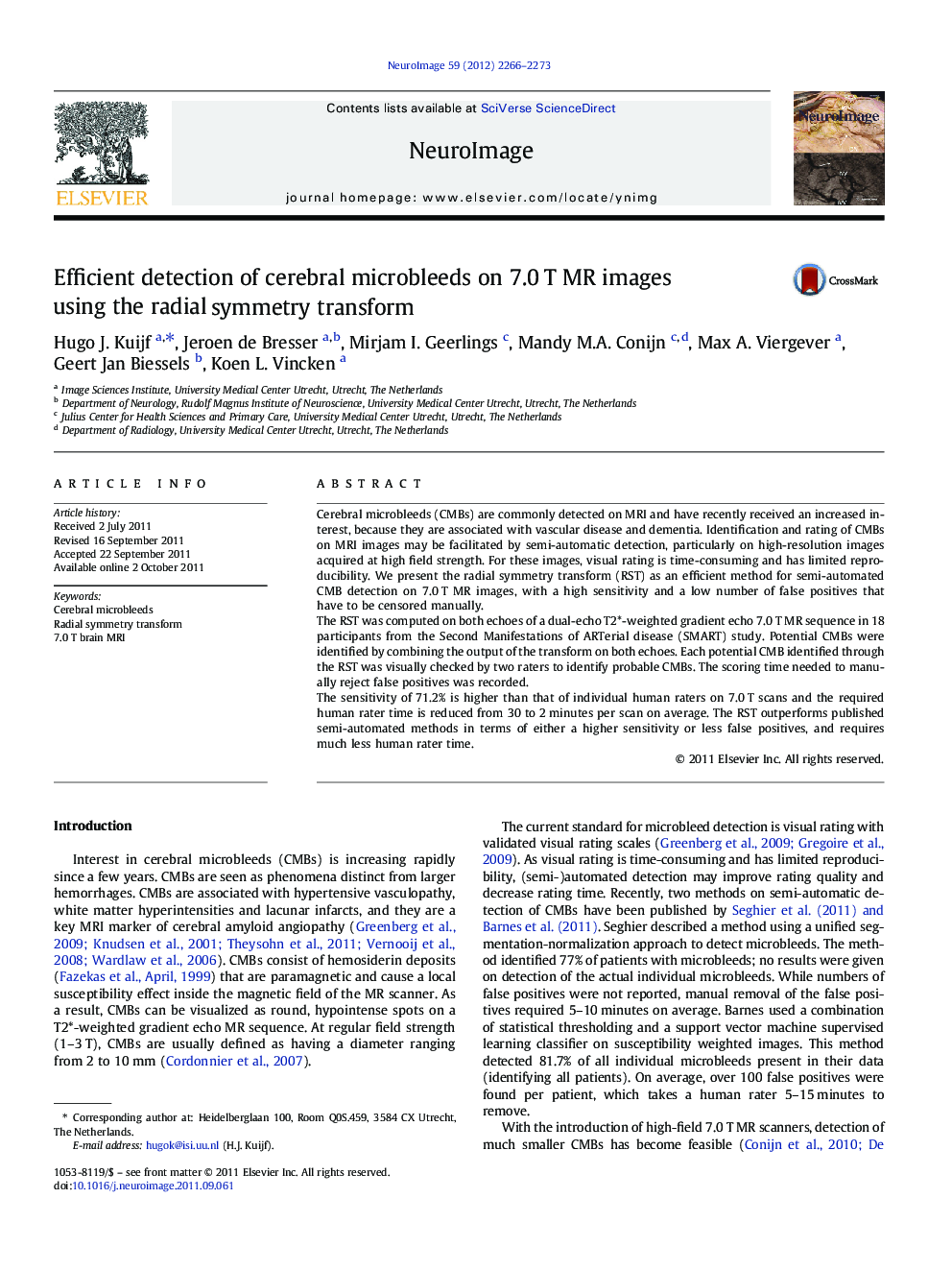| کد مقاله | کد نشریه | سال انتشار | مقاله انگلیسی | نسخه تمام متن |
|---|---|---|---|---|
| 6033470 | 1188747 | 2012 | 8 صفحه PDF | دانلود رایگان |

Cerebral microbleeds (CMBs) are commonly detected on MRI and have recently received an increased interest, because they are associated with vascular disease and dementia. Identification and rating of CMBs on MRI images may be facilitated by semi-automatic detection, particularly on high-resolution images acquired at high field strength. For these images, visual rating is time-consuming and has limited reproducibility. We present the radial symmetry transform (RST) as an efficient method for semi-automated CMB detection on 7.0Â T MR images, with a high sensitivity and a low number of false positives that have to be censored manually.The RST was computed on both echoes of a dual-echo T2*-weighted gradient echo 7.0Â T MR sequence in 18 participants from the Second Manifestations of ARTerial disease (SMART) study. Potential CMBs were identified by combining the output of the transform on both echoes. Each potential CMB identified through the RST was visually checked by two raters to identify probable CMBs. The scoring time needed to manually reject false positives was recorded.The sensitivity of 71.2% is higher than that of individual human raters on 7.0Â T scans and the required human rater time is reduced from 30 to 2Â minutes per scan on average. The RST outperforms published semi-automated methods in terms of either a higher sensitivity or less false positives, and requires much less human rater time.
⺠Cerebral microbleeds can be efficiently detected using the radial symmetry transform. ⺠7 T dual echo MRI allows detection of very small cerebral microbleeds (0.3-2.0 mm). ⺠The sensitivity of the method (71.2%) outperforms individual raters (51.5% and 66.7%). ⺠Required human rater time is reduced from 30 to 2 minutes per participant.
Journal: NeuroImage - Volume 59, Issue 3, 1 February 2012, Pages 2266-2273